It depends what you mean by 'capacitance'. If you mean two conductors separated by dielectric, then of course it doesn't.
However, if you mean 'behaves like capacitor', then yes it does.
a) If you take (for instance) a high value resistor from a power supply, and connect it to a capacitor, then the voltage will start at 0v and slowly ramp up.
b) If you take the same resistor and supply, and connect it to a 50 ohm resistor, the voltage will jump up as soon as connected to some value determined by the resistor ratio, and stay there.
c) If you take the same resistor and supply, and connect it to any length of 50 ohm line terminated with a 50 ohm resistor, it will behave just like (b).
d) This is where it gets interesting. If you take the same resistor and supply, and connect it to an open circuited length of 50 ohm transmission line, then it will behave like (b), at first. The voltage goes up to a 50ohm value, and stays there. It stays there for as long as the voltage wave travels along the line, and still stays there while the reflection wave travels back. When the reflection wave gets back to the resistor end, the voltages add and further reflections take place. As the reflections travel to and fro, the 'capacitive' behaviour emerges. This is where you need to find a video tutorial on transmission lines.
So why is that different from (c)? When the travelling wave hit the terminating resistor, it was not reflected. Everything stopped changing, with a DC current flowing through the high value resistor, along the line, and through the terminating resistor.
e) What happens if the line is short circuited at the end? As for (d), except as the reflections build up, 'inductive' behaviour emerges.
So you can see that the 'normal' behaviour of a transmission line is resistive. It's only after the time it takes for the speed of light to make several trips along the line that the capacitive or inductive behaviour emerges. As the time for this behaviour to build up depends on the length of the line, so does the effective capacitance or inductance also depend on the length of the line.
